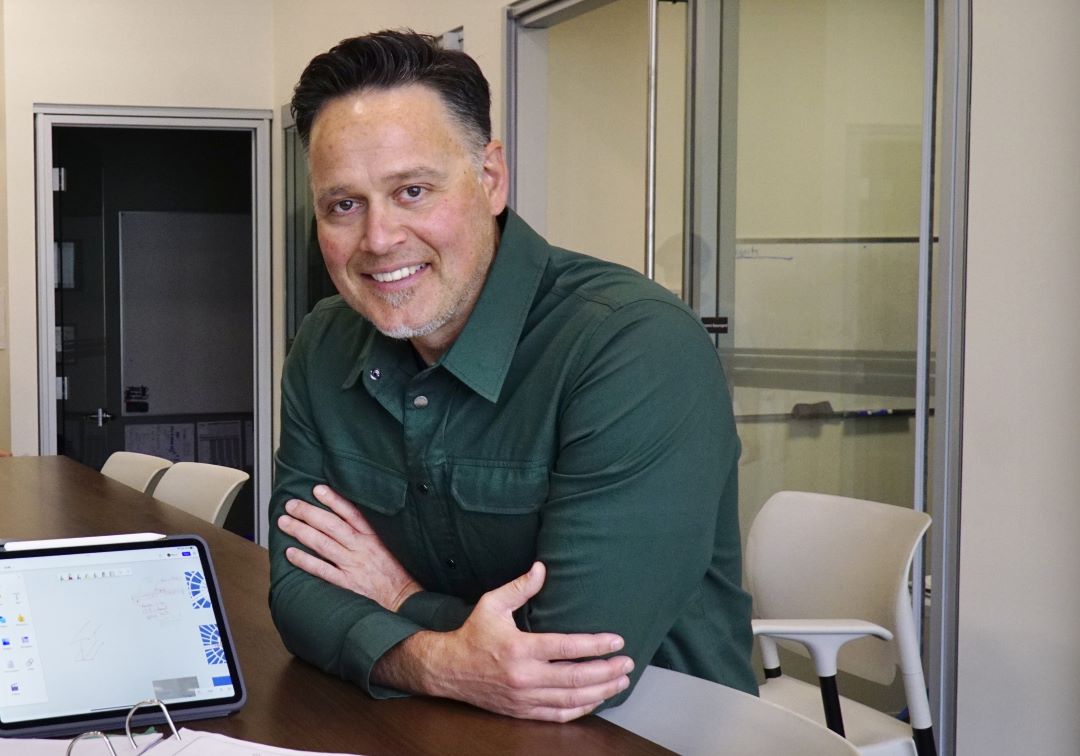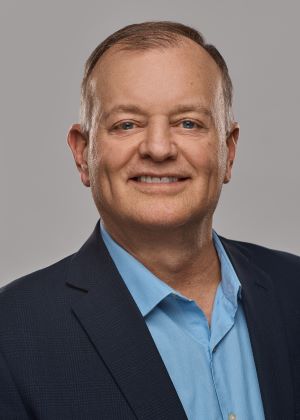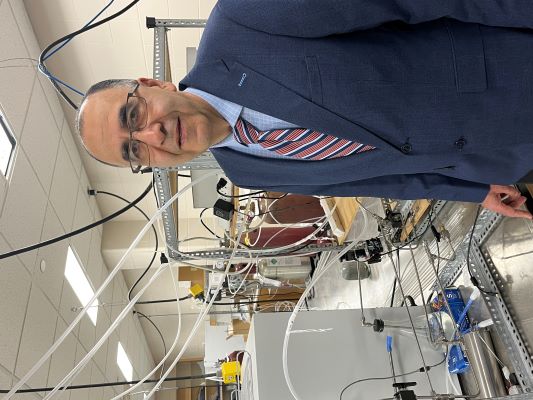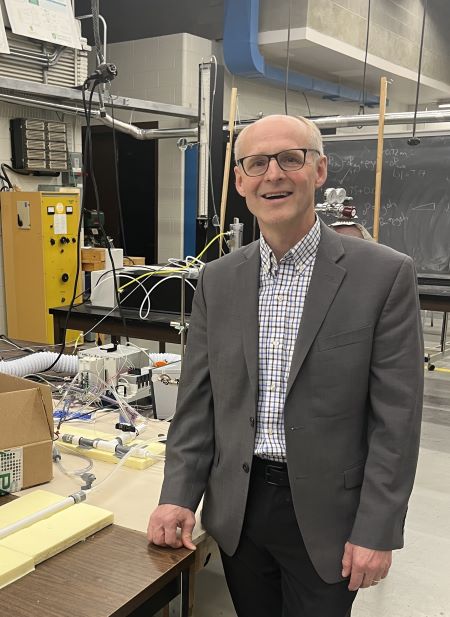
Ready to grow with Saskatchewan
FROM THOROUGH MAGAZINE: The University of Saskatchewan College of Engineering produces well-trained, hard-working engineering grads. These engineers and the college's research expertise are critical components of a growing Saskatchewan economy.
By Joanne PaulsonJason Mewis needs engineers. He’s added 10 people to his Saskatoon-based engineering firm this past year and he’s ready to hire more.
Mewis (BE’95 Civil) is the owner and founder of Engcomp, the company he started as a one-person operation in 2004 and has grown to a team of 60. It provides engineering expertise across a range of industries.
With major projects on the horizon, Mewis will be looking to add dozens to the company’s payroll in the next few years. Grads from the University of Saskatchewan College of Engineering (USask Engineering) will figure in his plans.
“(The college) is a critical feature for the talent we employ. A large portion of our people who are engineers, plus our businesspeople too, are U of S grads.”
USask Engineering prides itself on producing skilled, resourceful engineers who are ready to roll up their sleeves when they begin their careers. With the growth happening in Saskatchewan’s key industries – mining, oil and gas, and agriculture – and an increasing focus on sustainable power generation, the college’s engineers and the wide-ranging research expertise of its faculty and graduate students are needed to keep Saskatchewan’s economy moving forward.
Mewis spent eight years with a large multinational company, working as a senior project engineer in Saskatoon before he began his journey with Engcomp.
An Alberta firm was looking to expand into Saskatchewan and asked if Mewis was interested in being a key part of the new office. Two or three months later, the company folded but the overture had nudged Mewis in a new direction.
He had worked in consulting for eight years and hadn’t thought about becoming an entrepreneur, but others were not surprised when he decided to take the leap. He came into the industry at a time of growth, mergers, and acquisitions in the industry and describes himself as a product of that.
“I was continuing on my journey. It seemed like the universe was talking to me.”
On June 1, 2004, he set up his computer in his new office, made a call that morning, had a site visit that afternoon, and landed his first project.
“The rest is history. I just organically kept on going from there. We’ve grown substantially. Last year alone was about 40 per cent growth in sales and 30 per cent growth in staff.”
Most of Engcomp’s work is in the resource sector — dominantly mining, but also agricultural projects including food processing.
“Our two areas of specialization that have put us on the global stage are potash and uranium,” said Mewis. The company, already operating overseas, is always looking for opportunities in locations as far away as Brazil, Kazakhstan, and Africa.
More locally, Engcomp handles a variety of projects for Nutrien; is Gensource Potash’s detail engineering partner for a new operation; and is working with Saskatchewan Mining and Minerals Inc. (SMMI) on the $300 million upgrade of its plant in Chaplin, Sask. to change its sodium sulphate plant to a sulfate of potash operation.
“With SMMI kicking into action, we’re hoping to be in a position to hire more people — up to 15 to 20 more people in the next two to three years.”
Ensuring USask Engineering students understand the range of opportunity available to them in Saskatchewan was a key message when June Verhelst, (BE’83 Civil) delivered her keynote address at the college’s 2023 C.J. Mackenzie Gala of Engineering Excellence, where she was honoured for her remarkable engineering career.
As Senior Vice President Mining and Industrial for Graham Construction and Engineering Inc., Verhelst is among the graduates who have adapted to changing times and risen to leadership roles with large local companies.

She worked for 14 years at a construction company before joining Graham and over the years thought several times that she might have to leave the province to grow her career. But every time, Saskatchewan surprised her.
“This economy would just roll. This mining industry, and oil and gas, and all these industries would just roll and then I would go to another level — and it's happening right now,” Verhelst said in an interview.
“There are so many projects coming up that are so cool. This province is going to have a good run.”
She has a 30,000-foot view of the many large projects in Saskatchewan, with Graham playing a significant role in several of them.
“This is what industry has for you here. There’s a tremendous amount of opportunity coming,” is how Verhelst encapsulates her key message to young engineers. “You need to take a look at it, because between consulting and all the different jobs that involve engineers, like operations of these mines (for example), there's a lot of opportunity and they're all going to be looking for U of S grads.”
She has given back to the college in many ways for many years, including serving on the Dean’s Advisory Board. She and Graham are more than happy to engage due to the importance of the college. “There's such huge value in U of S engineering and the people that come out of there.”

SaskPower’s Tim Eckel (BE’94 Electrical) agrees. Graduates of the college are high-quality, home-grown and essential to the utility’s future, he said in a recent interview from his office in Regina.
“People from Saskatchewan want to stay in Saskatchewan and that makes them ideal employees for SaskPower,” said Eckel, vice-president, Energy Transition and Asset Management, adding that it’s not as easy to recruit from elsewhere.
“We find the quality and the innovation that comes out of the college is second to none. We’re quite a technical company and you’ll find engineers in leadership roles, too.”
SaskPower is tasked with reducing CO2 emissions by 50 per cent from 2005 levels by 2030. To that end, it’s adding 700 megawatts (MW) in south-central Saskatchewan by 2027, including 400 MW of wind and 300 MW of solar power.
Already, SaskPower has about 650 MW of renewable energy in its system and 1,000 MW at various stages of installation and approval. Not too far in the future, SaskPower will also look at a greenfield small nuclear reactor (SMR).
“We think by 2034 we could have the first one in service. We’re engaging stakeholders right now,” including consultations with Indigenous communities, Eckel said.
Once the sites are selected, possibly at Estevan or Lake Diefenbaker, and a federal assessment has been done, SaskPower should be ready for a “go/no go decision by 2029,” he said.
“Part of getting a licence to operate a nuclear reactor is demonstrating you have skilled labour and resources to operate this facility,” he said.
“The academic side of things will be very important to nuclear development in Saskatchewan. Utilities need to get to net zero, and that will require some smart people to determine how we’re going to get there.”
Therefore, SaskPower will need engineers of all disciplines.
“Quite often we are focused on the supply side, but there’s a huge amount of work that has to go into the transmission and distribution sides. That’s another place where we’re going to rely on U of S grads.
“It’s an exciting time. When I was graduating, the work at a utility was predictable and consistent, but I can tell you today it’s very exciting and ever-changing.”
Jafar Soltan, USask Engineering’s Associate Dean, Research and Partnerships, knows the importance of providing future employees to utilities and industry. However, he said the college’s reach goes beyond — right into Saskatchewan communities thanks to the innovative research by its faculty and students.
“We have wonderful research that is going on in science departments and we transfer that knowledge into applications,” he said. “Inherently by nature, our field is really about impact and making a difference in people’s lives.
“We have to go into the community, talk to them, see the problem through their eyes . . . and translate that information into a solution and take it back to the community.”

Today, the college has 1,630 undergraduate and 464 graduate students, and 92 faculty members. Over the years, it has grown from its core departments of chemical, mechanical, civil, and electrical engineering into other relevant areas to serve society.
For example, Soltan said, “Our chemical engineering program was expanded into chemical and biological engineering, and one reason is the heavy emphasis and value of agriculture and biological processes in the province.”
Similarly, electrical engineering has expanded to include a computer engineering program, while civil and geological engineering have grown to add environmental engineering.
Mechanical engineering has also developed to include interdisciplinary programs like biomedical engineering, which “relates to things that were traditionally outside engineering – everything related to living organisms including humans. This connects to medicine and other health sciences.”
In addition, the college has added the Ron and Jane Graham School of Professional Development to address the need for engineers to also develop skills in communication, leadership, and negotiation.
Soltan noted that the college’s educational, research and problem-solving offerings support the Province of Saskatchewan’s 30 Goals for 2030, outlined in the province’s official growth plan. To that end, USask Engineering is engaged in an incredible variety of projects, from safe nuclear fuels to the various uses of biomass.
“More than half of the province’s goals relate very closely to what we do. We are proud of the contribution and impact we have on these,” Soltan said.
“We serve different aspects of that road map, everything from agricultural research, to training of highly qualified professionals, and upscaling the workforce. This is a relatively new concept. Because of rapid changes in different industries, we need people to do lifelong learning and be able to adapt to new developments in industry.”
Carey Simonson, the college’s Associate Dean, Graduate Studies and Strategic Projects, agrees that this is where the college has immense impact, as graduates go on to change the world over 30- or 40-year careers.
He also pointed out that many of the foreign-trained bachelor’s students who come to do graduate degrees will stay and work in Canada.
“They advance our province, our nation, with these advanced degrees. They are really helping to build the future for our province and our country.”
Simonson himself earned his bachelor’s, master’s, and PhD in mechanical engineering from USask. He is internationally recognized for his expertise in heating, ventilation, and air conditioning (HVAC) and his research and industry collaborations have certainly had the broad impact Soltan describes.
For his part, Simonson cites USask Engineering colleagues whose work provided inspiration and example.
More than 40 years ago, College of Engineering professor Robert Besant developed air exchange technology that spawned a $3-billion industry and is still used in most homes today.

Fast forward to 2015, when Besant and Simonson were co-winners of the NSERC (National Sciences and Engineering Research Council) Synergy Award for Innovation for their collaboration with Saskatoon company Venmar CES to further improve heating and cooling systems.
The technology, named LAMEE (Liquid to Air Membrane Energy Exchanger) saves money, improves efficiency, and reduces greenhouse gas emissions. Indeed, the exchanger is used in Facebook data centres around the world to keep computers cool.
Now, working in the COVID era, Simonson is completing a project on testing contaminants in the heat exchanger. “As we recover the heat from the waste air to the fresh supply air, do we also transfer contaminants?” he asked.
The project was funded at $250,000 by the American Society of Heating, Refrigerating and Air Conditioning Engineers. Simonson and his team also have an NSERC COVID-related grant for examining the transfer of aerosols through exchanger membranes.
“Does it also allow gases to transfer, is the question, and small aerosols that would be transmitted by someone with COVID?” he asked. “We’ve developed a test facility in our lab to test those membranes.”
Simonson’s work is a perfect example of how USask Engineering’s research impact and industry collaboration improves the lives of people locally, provincially, nationally, and internationally. His research on energy efficiency, air conditioning, and quality of indoor air has past, present, and future relevance.
“The university the world needs,” USask’s current motto, remains true from research, collaboration and training standpoints, Simonson said.
“Industry involvement offers us the opportunities to train students to find solutions to relevant problems that make Saskatchewan and Canada better places and more competitive and impactful all over the world.”
Together we will support and inspire students to succeed. We invite you to join by supporting current and future students' needs at USask.

